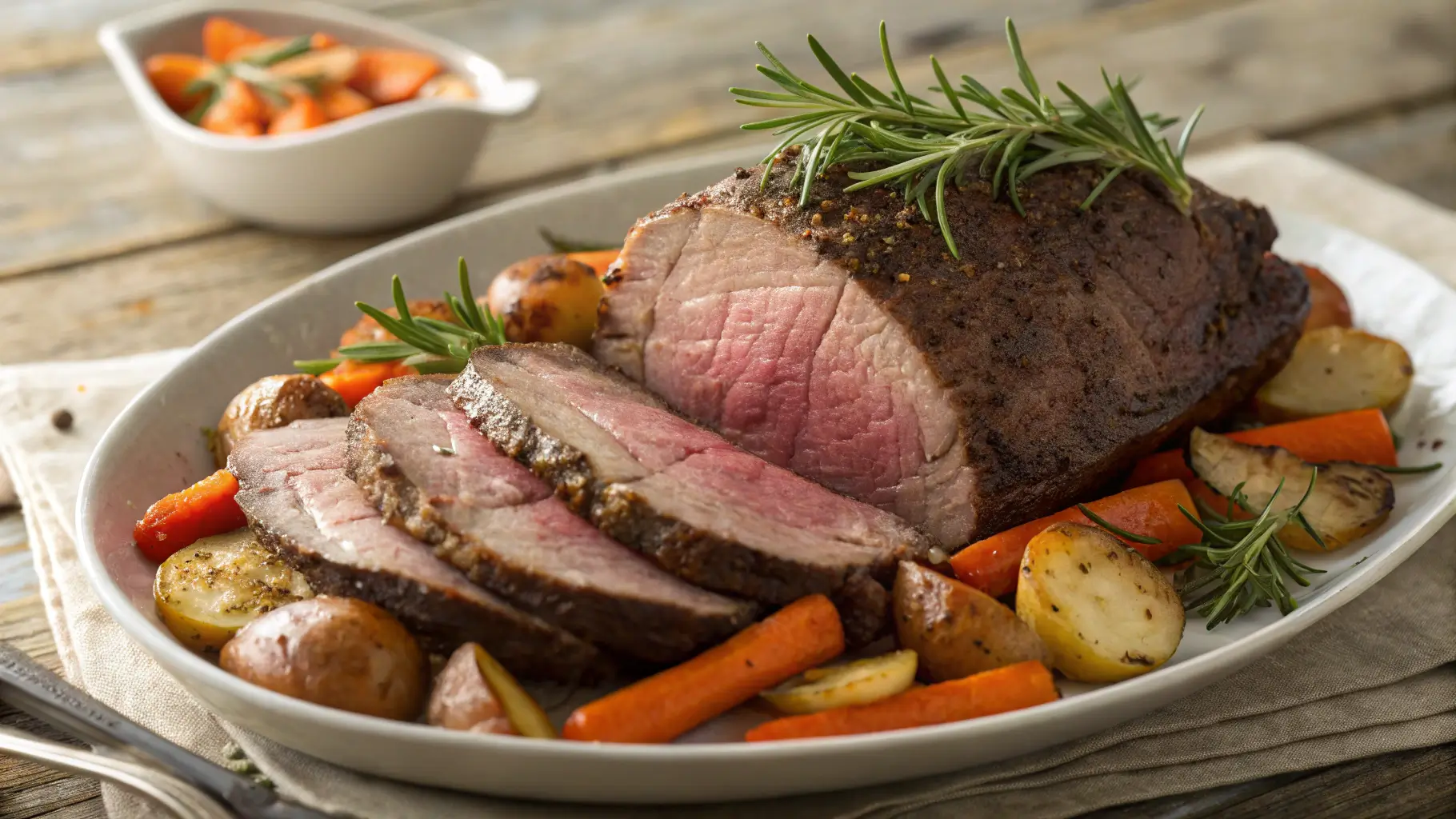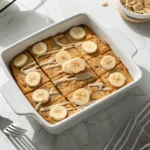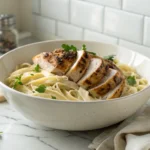If you’re looking for a delicious, budget-friendly cut of beef that’s versatile enough for slow cooking, oven roasting, or even pressure cooking, the bottom round roast is your best bet. This guide will take you through everything you need to know about this underrated cut, from its origins to expert cooking techniques. We’ll explore why it’s worth your attention, how to prepare it for maximum tenderness, and the best methods to bring out its rich flavors. Plus, you’ll find some mouthwatering recipes and answers to common questions about this amazing beef cut.
Let’s dive in and discover the secrets to mastering the bottom round roast!
What Is Bottom Round Roast?
What Part of the Cow Is It From?
The bottom round roast comes from the rear leg of the cow, specifically the bottom portion of the round primal cut. This area gets a lot of exercise, making the meat lean and tough compared to other cuts. However, with the right preparation, it transforms into a flavorful and satisfying dish.
Key features of this cut include:
- Leanness: It’s low in fat, making it a healthy choice.
- Firm texture: Perfect for slicing thin for sandwiches or hearty meals.
- Economical: One of the most affordable cuts of beef.
Key Characteristics of Bottom Round Roast
Wondering what makes the bottom round roast unique? Its firm texture and mild flavor mean it’s ideal for absorbing marinades and seasonings. It’s best cooked slowly at low temperatures to break down the muscle fibers, ensuring tenderness.
Highlights:
- Holds its shape well, making it perfect for carving.
- Pairs beautifully with robust spices and herbs.
- Works great for slow cooking, roasting, or pressure cooking.
Nutritional Value of Bottom Round Roast
Not only is the bottom round roast delicious, but it’s also packed with nutrients. It’s a great source of:
- Protein: Essential for muscle growth and repair.
- Iron: Vital for energy and immune health.
- B vitamins: Helps support a healthy metabolism.
With its low fat content, this roast is an excellent choice for those watching their calories while still craving a hearty beef dish.
Why Choose Bottom Round Roast? (250 Words)
Affordable and Versatile Cut
The bottom round roast is a wallet-friendly choice for beef lovers. In addition, its affordability doesn’t compromise its quality, making it an ideal option for families and budget-conscious shoppers. Whether you’re cooking for a weekday dinner or prepping meals for the week, this cut delivers exceptional value.
Furthermore, its versatility means you can use it in countless recipes, from hearty beef stews to elegant roasts for special occasions. For more inspiration on healthy and creative cooking, check out this guide on high-protein recipes.
Flavor Profile and Texture
While the bottom round roast is leaner than pricier cuts, it still offers a robust beefy flavor that shines in slow-cooked dishes. However, its texture can be tough if not cooked properly. Thus, slow-cooking or marinating is recommended to achieve optimal tenderness.
Enhancing the flavor is as simple as pairing it with aromatic seasonings, marinades, or even a savory gravy. On the other hand, if you prefer bolder flavors, try using smoked spices or wine-based sauces. This cut absorbs flavors beautifully, making every bite delicious.
Perfect for Meal Prepping
Are you a fan of meal prepping? The bottom round roast is perfect for batch cooking. Moreover, its large size allows you to prepare multiple servings at once, saving time and effort. Cook it on Sunday, and you’ll have tender slices or shredded beef ready for sandwiches, salads, or grain bowls throughout the week.
How to Prepare a Bottom Round Roast?
Selecting the Best Cut
When choosing a bottom round roast, look for meat that has a bright red color and minimal surface fat. In addition, the roast should feel firm to the touch. If possible, ask your butcher for a well-trimmed cut with a uniform shape to ensure even cooking.
For example, opting for roasts labeled as USDA Choice offers a balance of quality and affordability, making it a smart choice for most dishes.
Seasoning Techniques for Maximum Flavor
Proper seasoning is the key to a mouthwatering bottom round roast. For instance, start with a generous coating of salt and pepper to bring out its natural flavors. For a more robust taste, consider adding:
- Garlic powder
- Smoked paprika
- Dried rosemary or thyme
Additionally, let the seasoned roast rest at room temperature for about 30 minutes before cooking. This step ensures even seasoning distribution and helps the meat cook evenly.
Tips on Marinating for Tenderness
For extra tenderness, marinating is a game-changer. Combine ingredients like soy sauce, balsamic vinegar, olive oil, and your favorite herbs. Therefore, letting the roast soak in the marinade for 4–12 hours in the refrigerator is highly recommended. This process not only tenderizes the meat but also infuses it with incredible flavor.
Cooking Methods for Bottom Round Roast
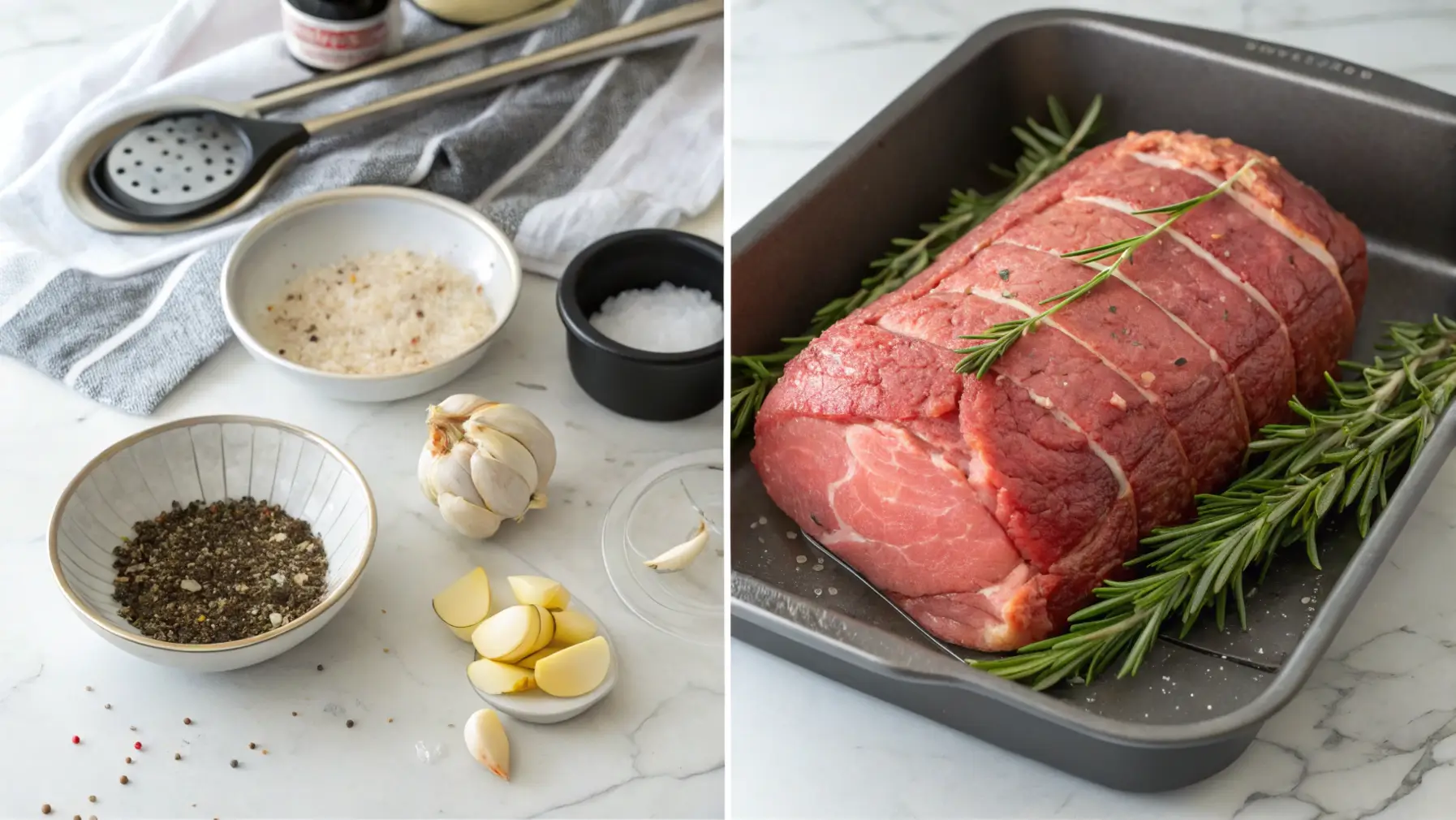
Oven Roasting for Beginners
Oven roasting is a classic and reliable method for cooking a bottom round roast. This technique allows the natural flavors to shine while ensuring the roast stays tender and juicy. First, preheat your oven to 350°F (175°C). Then, place the seasoned roast in a roasting pan with a rack to elevate it, ensuring even heat circulation.
In addition, adding some vegetables like carrots, potatoes, and onions to the pan enhances the flavors and provides a complete meal. Roast the meat for about 20 minutes per pound, or until the internal temperature reaches 135°F (57°C) for medium-rare. Finally, let the roast rest for 10–15 minutes before slicing to retain the juices.
Slow Cooking for a Tender Finish
Slow cooking is perfect for achieving a fork-tender bottom round roast. This method works wonders with minimal effort, making it ideal for busy days. Simply season the roast, place it in a slow cooker, and add beef broth, garlic, onions, and your favorite herbs.
Cook on low heat for 8–10 hours or high heat for 4–6 hours. Consequently, the low-and-slow cooking process allows the meat to break down and become incredibly tender. Serve with its natural juices as a light gravy, or thicken the juices for a heartier sauce.
Pressure Cooker and Instant Pot Tips
If you’re short on time, the pressure cooker or Instant Pot can deliver excellent results. In fact, it’s one of the fastest ways to cook a bottom round roast while maintaining its flavor and texture. Start by searing the roast on all sides using the sauté function.
Next, add beef stock, onions, and seasonings. Seal the lid and pressure cook on high for about 45–50 minutes. Allow a natural release of pressure for the best results. Additionally, this method locks in the juices and flavors, ensuring a tender, moist roast every time.
Grilling and Smoking: Unique Ways to Cook It
For those who love smoky flavors, grilling or smoking the bottom round roast can be an exciting option. Begin by seasoning the roast with a dry rub or marinade. Grill it over indirect heat or smoke it at a low temperature of about 225°F (107°C).
Moreover, this method adds a unique, charred taste that pairs beautifully with barbecue sauces or spiced rubs. Ensure the internal temperature reaches your desired level of doneness before slicing and serving.
Tips for Perfectly Cooked Bottom Round Roast
How to Achieve the Right Temperature
Cooking a bottom round roast to the correct internal temperature is critical for success. Use a meat thermometer to avoid overcooking. For example, aim for:
- Medium-rare: 135°F (57°C)
- Medium: 145°F (63°C)
- Well-done: 160°F (71°C)
Additionally, remember that the roast continues to cook after it’s removed from the heat. Thus, pulling it out 5°F (3°C) before your target temperature ensures perfect doneness.
Resting and Slicing the Roast Properly
Resting your bottom round roast after cooking is essential to keep it juicy. Allow the roast to rest for at least 10 minutes before slicing. Meanwhile, use this time to prepare a sauce or side dish.
When slicing, always cut against the grain. This way, the fibers are shorter, making each bite more tender and easier to chew. Furthermore, thin slices work great for sandwiches, while thicker cuts are perfect for hearty meals.
Common Mistakes and How to Avoid Them
Avoid these common mistakes to ensure your bottom round roast turns out perfectly every time:
- Skipping seasoning: Always season generously for the best flavor.
- Not using a thermometer: Therefore, invest in a good meat thermometer for precise cooking.
- Overcooking: Slow cooking or roasting at low heat prevents dryness.
For more tips and recipes, explore additional resources on Muscle Chef’s website. For instance, high-protein mac and cheese recipe pairs wonderfully with thinly sliced beef roasts.
Delicious Recipes with Bottom Round Roast
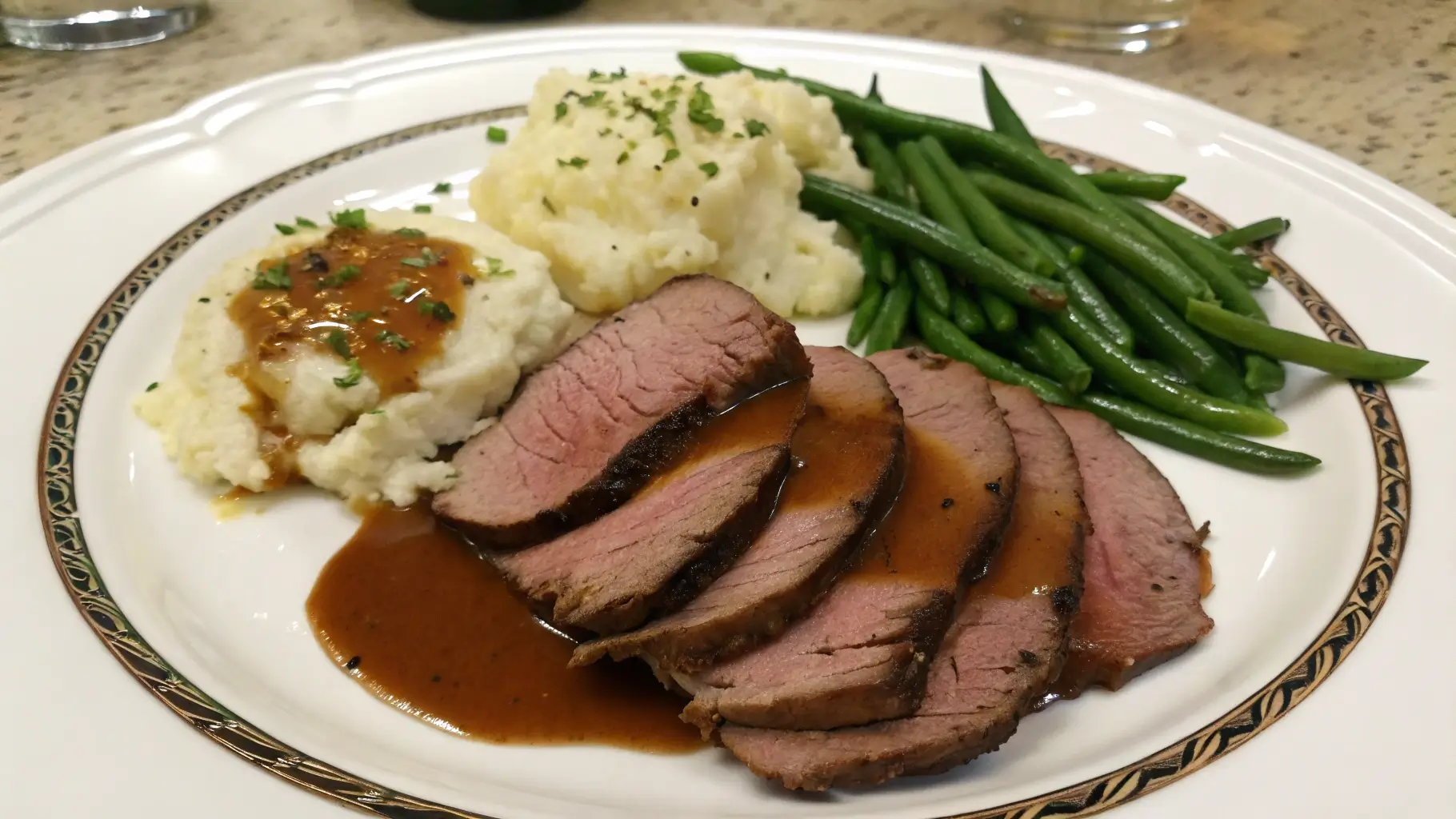
Classic Oven-Roasted Bottom Round
For a timeless recipe, try a classic oven-roasted bottom round roast. Preheat your oven to 350°F (175°C) and season the roast generously with salt, pepper, garlic powder, and dried thyme. Next, place it in a roasting pan with a rack, surrounded by chopped onions, carrots, and potatoes for a complete meal.
Roast for about 20 minutes per pound until the internal temperature reaches your preferred level of doneness. Then, let it rest before slicing. This dish pairs wonderfully with a simple gravy made from the pan drippings.
Bottom Round Roast with Vegetables
This hearty recipe is perfect for a comforting family dinner. First, sear the bottom round roast in a large skillet to lock in the juices. Then, transfer it to a slow cooker along with your favorite root vegetables, like parsnips and sweet potatoes.
Add beef broth, Worcestershire sauce, and fresh rosemary. Cook on low for 8 hours, letting the flavors meld together. The result is a tender roast with rich, savory vegetables.
Slow-Cooked Bottom Round in Gravy
If you love a meal that practically cooks itself, this recipe is a winner. Combine your bottom round roast with onions, garlic, beef stock, and a splash of red wine in a slow cooker. Additionally, you can add mushrooms for an earthy flavor.
Cook on low heat for 6–8 hours. Finally, thicken the broth with a bit of cornstarch to create a velvety gravy. Serve the roast sliced or shredded over mashed potatoes for ultimate comfort food.
Frequently Asked Questions (FAQs)
How Long Does It Take to Cook a Bottom Round Roast?
The cooking time depends on the method and size of your roast. For oven roasting, plan on about 20 minutes per pound at 350°F (175°C) for medium-rare. However, slow cooking can take 8–10 hours, while pressure cooking reduces the time to under an hour.
What Are Some Substitutes for Bottom Round Roast?
If you can’t find a bottom round roast, consider using cuts like top round roast, eye of round, or chuck roast. These alternatives have similar textures and work well in the same recipes, though chuck roast may have a bit more fat.
Can You Freeze a Cooked Bottom Round Roast?
Absolutely! In fact, freezing is a great way to store leftovers. Slice the roast and wrap portions in plastic wrap before placing them in freezer-safe containers. Therefore, you can enjoy the roast for up to three months by simply reheating it in the oven or microwave.
How Do You Keep Bottom Round Roast from Drying Out?
To prevent dryness, use low and slow cooking methods, such as roasting at a lower temperature or using a slow cooker. Additionally, always let the roast rest before slicing to retain its juices. Using marinades or cooking with broth can also help keep the meat moist.
Since your outline originally included seven parts, I’ll craft Part 8: Common Mistakes to Avoid with Bottom Round Roast and Part 9: Final Tips and Serving Ideas as extensions to complement the article. Here’s how it looks:
Common Mistakes to Avoid with Bottom Round Roast
Overcooking the Roast
One of the biggest pitfalls when preparing a bottom round roast is overcooking it. As a result, the meat can become tough and dry. To avoid this, always use a meat thermometer to monitor the internal temperature. Remove the roast from the heat at 135°F (57°C) for medium-rare and let it rest. Thus, the juices will redistribute, keeping the roast tender.
Additionally, slow-cooking at a low temperature is an excellent way to prevent overcooking. This method ensures the meat breaks down gently, producing a melt-in-your-mouth texture.
Skipping Rest Time
Resting the bottom round roast is a non-negotiable step. If you skip this step, you risk losing all the flavorful juices when you slice into the roast. Always allow 10–15 minutes of resting time after cooking.
Using the Wrong Cooking Method
On the other hand, certain cooking methods don’t suit the bottom round roast. Quick, high-temperature cooking often results in tough meat. Therefore, stick to methods like slow roasting, braising, or pressure cooking, which help break down the meat fibers for a tender outcome.
Not Slicing Against the Grain
Another common mistake is slicing the roast incorrectly. To ensure each bite is tender, always slice against the grain. This shortens the muscle fibers, making the meat easier to chew.
Final Tips and Serving Ideas
Creative Ways to Serve Bottom Round Roast
Once you’ve mastered cooking a bottom round roast, the possibilities for serving it are endless. For example:
- Use thin slices for hearty sandwiches with horseradish or mustard.
- Shred the roast and serve it over creamy mashed potatoes with gravy.
- Add cubed roast to soups or stews for a rich, beefy flavor.
- Pair it with roasted vegetables for a balanced meal.
Pairing Bottom Round Roast with Sides
The right side dishes can elevate your bottom round roast meal. Consider pairing it with:
- Mashed or roasted potatoes: Classic and comforting.
- Steamed green beans or asparagus: Adds a fresh, crunchy contrast.
- Buttery rolls or crusty bread: Perfect for sopping up juices or gravy.
- Creamy coleslaw or a crisp salad: Offers a refreshing balance to the roast’s richness.
Storing and Reheating Leftovers
If you’ve got leftovers, store them in airtight containers in the refrigerator for up to four days. Alternatively, freeze slices in portion-sized packets for quick meals later. When reheating, use a low-temperature oven or a splash of broth in a skillet to maintain moisture.

